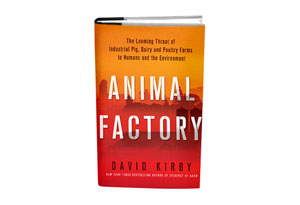The Hidden Costs of Eating Meat

Photo: Eliseo Miciu/Gallery Stock
Yes, you can buy a double cheeseburger for $1 or a pound of ground pork for well under $5, but that isn't necessarily the good news it seems to be. The large-scale industrial farms necessary to produce huge quantities of inexpensive meat are typically overcrowded, unclean, and poorly regulated. As David Kirby illustrates in his new book, Animal Factory, this way of raising livestock has been linked to antibiotic-resistant bacteria and food-borne illness. The author explains what's gone wrong and how it all might be fixed.
O: You've written a book about a type of farm known as a CAFO—something many of us have never heard of. Can you explain what it is?David Kirby: CAFO is an acronym for "concentrated [or confined] animal feeding operation." The idea behind a CAFO is to concentrate as many animals into the smallest space possible and to use highly mechanized feed systems, both of which lower production costs. These factory farms have helped create the cheapest food in human history, but the supermarket sticker doesn't include the total costs to human health, to the environment, and to rural communities.
O: And what are those costs?
DK: One issue is the overuse of antibiotics to speed animal growth. This practice has been linked to the rise of antibiotic-resistant bacteria like methicillin-resistant staphylococcus aureus (MRSA), which in 2008 was responsible for an estimated 15,000 deaths across the country. In addition, factory farms have been known to harbor and spread the food-borne illnesses E. coli and salmonella—the germs responsible for those recalls of ground beef and raw tomatoes you hear about on the news.
For the people who live within a few miles of these operations, there's another complaint: the odor. At outdoor dairy lots in places like Washington's Yakima Valley, the sun bakes the waste from thousands of cows, and then the animals grind it up with their hooves. Once that dust becomes airborne, the people who live nearby are literally breathing in feces. Not surprisingly, neighbors complain of asthma and allergy symptoms.
O: Why isn't the government stepping in?
DK: As a presidential candidate, Barack Obama had a long and impressive list of goals for regulating CAFOs. He's yet to move forward with most of these measures. This year, however, we are seeing hopeful developments. Lisa Jackson, the new head of the EPA, is aggressively monitoring CAFOs for pollution violations. The Department of Justice and the USDA are holding a series of workshops around the country to hear from small farmers who are being squeezed by anticompetitive practices. These are steps in the right direction.
A humane, hands-on approach to raising farm animals



